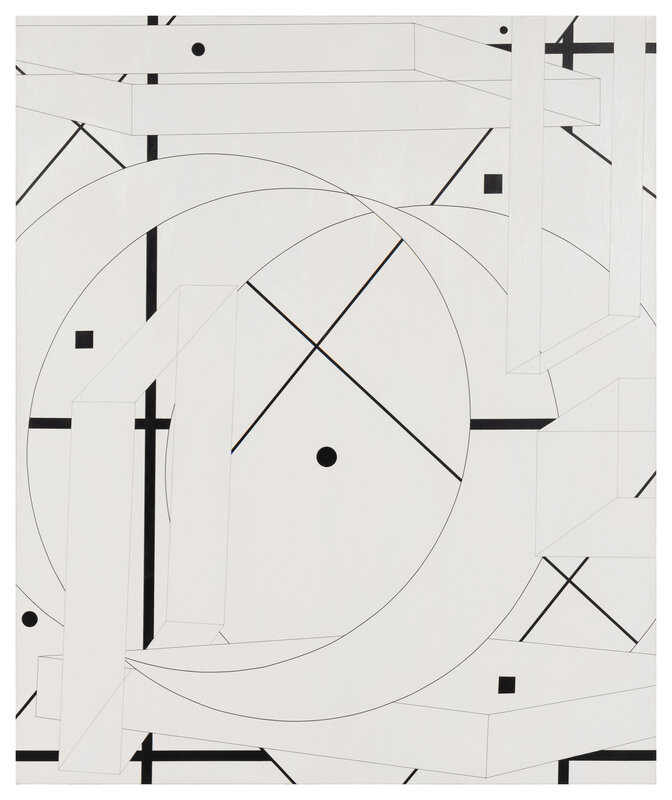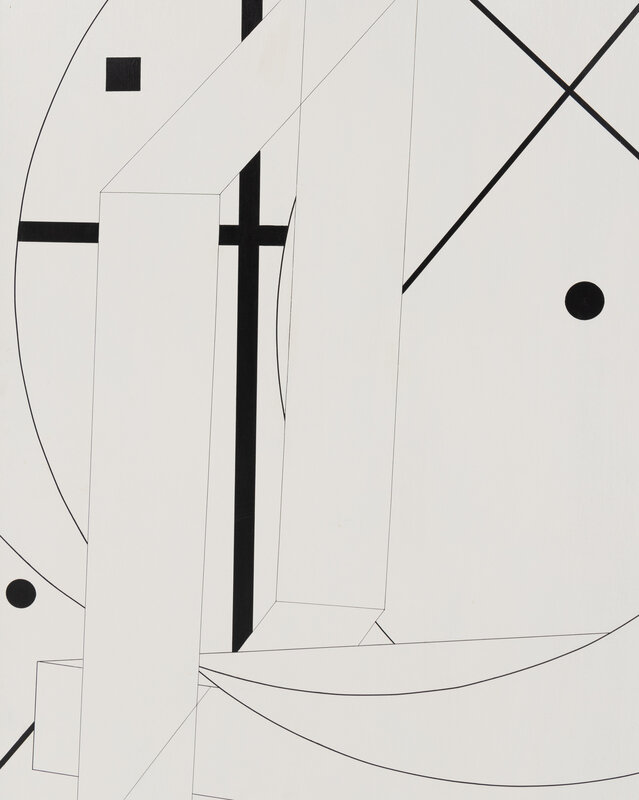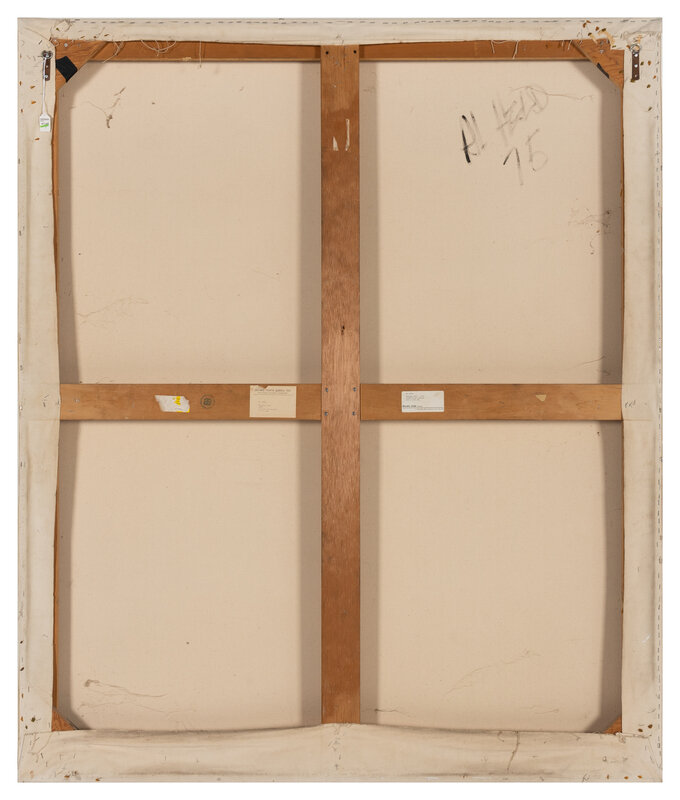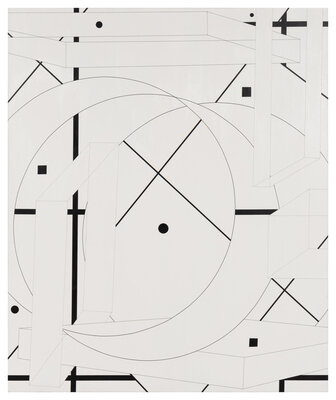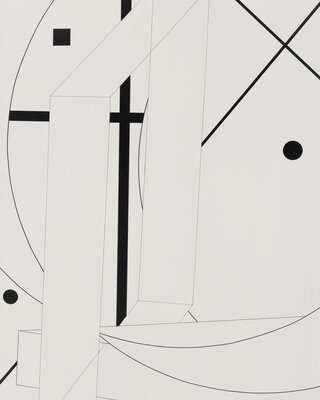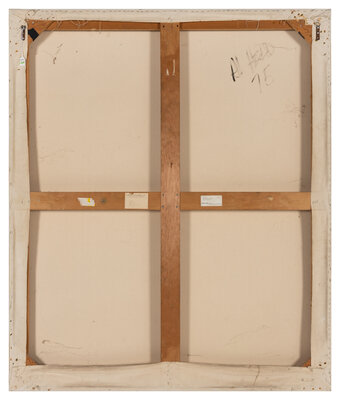Condition Report
Contact Information
Auction Specialists
Lot 67
Al Held
(American, 1928-2005)
Stereo III, 1975
Sale 1327 - Post War and Contemporary Art
Apr 24, 2024
10:00AM CT
Live / Chicago
Own a similar item?
Estimate
$80,000 -
120,000
Price Realized
$90,000
Sold prices are inclusive of Buyer’s Premium
Lot Description
Al Held
(American, 1928-2005)
Stereo III, 1975
acrylic on canvas
signed Al Held and dated (verso)
72 x 60 inches.
Provenance:
André Emmerich Gallery, New York
Donald Morris Gallery Inc., Birmingham, Michigan
Private Collection
Literature:
Arts Magazine, Volume 51, No. 3, Art Digest Incorporated, New York, New York, November 1976, pp. 2, illus.
R.C. Kenedy, Paris: A Report, Art International, Volume 21, No. 4, J. Fitzsimmons, Lugano, Switzerland, July - August 1977, pp. 57, illus.
Richard Armstrong, Al Held, Rizzoli, New York, 1991, no. 62, illus.
Exhibited:
New York, New York, André Emmerich Gallery, Al Held: New Paintings, November 13 - December 1, 1976
Zürich, Switzerland, Galerie André Emmerich, Al Held: Neue Bilder und Zeichnungen/Recent Paintings and Drawings, January 15 - February 19, 1977
Paris, France, Galerie Roger d'Amecourt, Al Held, March, 1977
London, England, Annely Juda Fine Art, Al Held: Paintings and Drawings, May 10 - June 25, 1977
Birmingham, Michigan, Donald Morris Gallery, Al Held, November 5 - December 10, 1977
Lot Essay:
Al Held’s (American, 1928 - 2005) masterful hard-edge abstraction and exactingly minimalist approach is at its peak in Stereo III (1975), a work comprised of dizzyingly choreographed positive and negative shapes in decisive yet delicate black linework, contrasted against a flatly applied white background. Stereo III is from the heart of Held’s black and white period: from 1967-79, he reduced his palette, challenging himself to intensify the clarity and structure of his work without decorative color. Other works from this period have found homes in the collections of the Denver Art Museum (Black Nile II, 1971), the Whitney Museum of American Art (South-Southwest, 1973), the Museum of Fine Arts, Boston (Jupiter V, 1974), and the Metropolitan Museum of Art (Mercury Zone III, 1975), among others.
Held was born in Brooklyn to Jewish Eastern-European immigrants, the youngest of three children. His strong interest in art was encouraged by his mother, a talented seamstress and amateur artist herself. After leaving high school, Held served two years in the Navy, enlisting a few months after the end of World War II to work on submarines. Following his service, he used the GI Bill to continue his studies at the Art Students League, and then on to Paris to study at the Académie de la Grande Chaumière. Though he left for Paris as a social realist painter, towards the end of his studies the influences of Pollock and Mondrian began to appear in his work. Upon his return to New York, Held worked various odd jobs – a stint at The Door Store, a porter at the Musem of Modern Art, a construction worker on freeways, a small moving business – anything to keep his artistic practice afloat. Held finally began to gain recognition towards the end of the 1950s; his first solo exhibition in New York was held at the Poindexter Gallery in 1960. His career progressed rapidly from there with his first retrospective exhibition at the Whitney Museum of American art in 1974. His first solo shows in London and Paris followed in 1977, prominently featuring Stereo III at both Annely Juda Fine Art and at Galerie Roger Galerie Roger d’Amécourt.
In using solely black and white, Held was able to explore dimensionality through interconnected forms and vanishing points. Though his paintings are intensely detailed, Held shied away from exact designing or preliminary drawing for his compositions, preferring instead to build directly onto the canvas for the entire process, a kind of intrinsic geometry. When he returned to using color in the late 1970s, he found that the reintroduction allowed him to further expand the architectural proportionality within his paintings.
A pioneer of hard-edge abstraction, Held’s death in 2005 left a fifty-year legacy of painting and a storied career as one of the most ambitions artists of the twentieth century.
